Content
Strawberries are one of the most popular horticultural crops. This sweet berry is grown in many countries, it is bred and constantly improved. To date, several thousand varieties of garden strawberries and strawberries have been bred, some of them are sweeter and more aromatic, others can be stored for a long time, the third are not afraid of the cold, and the fourth bear fruit all year round (remontant varieties). Unfortunately, these strawberry varieties have not only strengths, the plants are also susceptible to many diseases.
You can learn about strawberry diseases with photos and methods of their treatment from this article.
What is the problem with garden strawberries?
Most of all, strawberries are prone to fungal diseases. This situation is especially aggravated during a rainy period, a decrease in air temperature, in cloudy, sunless weather. The fungus can appear not only on the greenery of strawberry bushes, it affects both the roots and the berries themselves.
The most famous and common diseases of garden strawberries are:
- rot: white, gray, black, root and late blight;
- powdery mildew;
- fusarium wilting of bushes;
- spots: white, brown and black.
A detailed description of these diseases of strawberries with a photo, as well as methods of dealing with ailments, can be found below.
Strawberry white rot
Strawberry white rot occurs due to a lack of heat and light, and in conditions of high humidity. You can find out about the infection of the bushes by the extensive whitish spots that appear on the leaves of strawberries - this is rot.
Later, the spots from the leaves of the strawberry move to its fruits - the berries become white, covered with a fungus. These strawberries are not edible.
Means for the prevention of white rot are as follows:
- planting strawberry bushes in a well-sunlit, elevated place;
- purchasing and planting healthy, uninfected seedlings;
- observance of sufficient distances between bushes in rows;
- timely removal weedsthat create additional shade and thicken the planting.
If you cannot protect strawberries from this disease, you can try to fight rot: infected bushes must be treated with fungicidal preparations, for example, use "Switch" or "Horus".
Gray strawberry rot
The most common diseases of remontant strawberries and common garden berries are associated with the appearance of gray rot. This is not surprising, because the appearance of this disease is facilitated by a warm and humid microclimate: it is this kind of weather that reigns in greenhouses and is often observed in the summer in most of the country.
If we add to the weather factors the fact that strawberries are grown in one place for a long time, we can talk about infection with gray rot up to 60% of the bushes.
The disease can be recognized by the following signs:
- hard brown spots appear on the fruits of garden strawberries, which are subsequently covered with a bloom of gray;
- affected strawberries shrivel and dry up;
- brown and gray spots of rot gradually transfer to the leaves of strawberry bushes.
Fungal diseases of strawberries and the fight against them are reduced to preventive measures, such as:
- Regular weeding and weeding.
- Sprinkling ash or lime on the ground.
- During flowering or just before that, treat the strawberry bushes with Bordeaux liquid or a Barrier-type agent.
- In the fall, after harvesting, you need to wait for the rudiments of new leaves to appear and remove all old foliage.
- A good way to prevent disease is to alternate strawberry rows with onions or garlic.
- Mulching the beds with straw or pine needles.
- Removal of diseased flowers, leaves and berries.
- Harvesting regularly and frequently.
It must be remembered that strawberry varieties in which flower stalks are located above the leaf stalks, that is, when the bush and berries do not touch the ground, are less susceptible to various diseases.
Black root rot
Another disease of strawberry bushes is root rot. It first appears on young roots, looks like black spots that gradually grow and merge.
Then the entire bush from the roots to the outlet becomes brown, the roots will be fragile and brittle, lifeless. As a result, the yield decreases sharply, because there is no "living space" left on the strawberries, the whole bush becomes infected.
Root rot can start at any stage strawberry vegetation and lasts until the death of the bush or until the onset of frost.
To treat root rot is difficult, or rather impossible. Damaged bushes must be dug up together with the roots and burned, and the ground must be treated with disinfectants.
Methods for preventing the disease are as follows:
- Feed the strawberries only with rotted compost, as the unripe fertilizer retains pathogenic bacteria and viruses.
- As soon as the snow melts, the bushes need to be treated with a fungicide.
- Before covering the strawberries for the winter, they should also be treated with, for example, "Phytodoctor".
- Choose only well-lit, dry areas of the garden for planting garden strawberries.
Black fruit rot
Another disease of garden strawberries is black rot. Hot and humid weather contributes to the appearance of such an infection. It is considered characteristic of this disease that rot spots appear only on the berries, the bushes themselves remain healthy.
At first, strawberries become watery, lose their natural color, and acquire a brown tint. The berries do not have the characteristic strawberry aroma and taste. Subsequently, the fruit becomes covered with a colorless bloom, which after a while turns black.
Strawberry diseases, which are associated with fungal infections, are very difficult to treat. A bush cannot be cured of black rot, you can only pluck the affected berries and burn them.
To prevent the disease, the following recommendations must be followed:
- plant strawberry seedlings in high beds (a hill of land 15-40 cm high);
- dissolve two grams of potassium permanganate in a bucket of water and pour the bushes with this solution - this will disinfect the soil and improve the quality of the fruit;
- use less nitrogen-containing and organic fertilizers.
Late blight rot
The most dangerous fungal disease of strawberries is late blight rot. From this disease, the entire crop can very quickly die, up to the last bush.
Late blight affects the entire bush, but its first signs appear on strawberries. First, the skin of the berries thickens, the flesh becomes tough, has a bitter taste, then dark purple spots appear on the strawberries and the fruits dry out.
Then all the leaves and even the stem of the strawberry bush dry. The cause of late blight may be improper watering, because, like other fungal infections, this one appears against a background of high humidity.
Late blight remains in the soil for a long time, it does not disappear from infected bushes, so it is important to follow agricultural techniques and cultivate the land and the seedlings themselves.
You can protect young strawberries from late blight rot as follows:
- Together with the harvest, collect diseased berries, dry foliage, extra mustache - to thin out the bushes as much as possible.
- Do not overfeed strawberries.
- Treat plants before sheltering for the winter.
- Plant only those varieties that are immune to late blight rot.
- Observe an interval of at least two meters between plantings of different varieties of strawberries.
- For normal ventilation and lighting, observe the 30x25 cm landing pattern.
Powdery mildew
This strawberry disease is also referred to as fungal infections. The disease damages both leaves and fruits, therefore, it can significantly reduce the yield or even completely destroy it.
Description of the symptoms of powdery mildew with a photo:
- on the seamy side of the leaves, individual whitish spots begin to appear, which look like a bloom;
- gradually the spots grow and merge into a single whole;
- leaves curl, wrinkle, become thicker;
- the growth of the ovaries stops, they become brown and die off;
- on those berries that have already formed, a bloom of white appears, gradually the fruits turn blue and rot;
- even the strawberry whiskers die off, taking on a brown tint.
If the air temperature is high and the humidity is high, powdery mildew will develop very rapidly.
The following will help prevent illness:
- before planting strawberry seedlings, its roots are treated with copper sulfate;
- before the strawberry begins to bloom, it should be treated with "Topaz";
- strawberry leaves should be sprayed with a complex mineral fertilizer.
When the bushes are already infected, you can try to fight the disease. Powdery mildew is treated like this:
- Last year's foliage from infected bushes must be collected and burned.
- The bushes that were sick last season should be sprayed with a solution of soda ash the whole next year.
- When the berries begin to pour and sing, they should be treated with cow serum diluted in water (1:10).
- If the situation worsens, you can add a few drops of iodine to the serum. Carry out processing every three days.
Fusarium
Fusarium wilting is a disease characteristic of many garden and horticultural crops. One of the reasons for the appearance of infection is called extreme heat, as well as an excess of weeds on the site.
It is easy to understand that strawberries are sick with fusarium: the bushes turn brown and dry quickly. All parts of the plant disappear: stems, leaves, berries and even roots.
It is difficult to treat fusarium wilting, it is possible only in the very early stages of the disease. In such cases, any fungicidal preparation is used.
Preventing illness is much easier:
- Choose only healthy seedlings for planting.
- Do not plant strawberries where potatoes grew.
- Do not plant the bushes again in the same place earlier than four years later.
- Remove weeds in a timely manner.
White spot
White spot is a common leaf disease in garden strawberries. Oddly enough, the first signs are not white spots, but small round dots of a red-brown hue that appear throughout the entire leaf area.
Gradually, the spots merge into a large spot, the middle of which brightens, and as a result is perforated - the sheet becomes perforated. As a result of the activity of this fungus, up to half of the green mass of the bushes is lost, which leads to a significant decrease in yield and a deterioration in the taste of strawberries.
It will not work to treat white spot, the bushes will have to be removed.Healthy strawberries without signs of illness must be treated with antifungal drugs that contain copper.
Spotting is very dangerous. How to deal with them:
- after harvesting, feed the strawberries with phosphorus-potassium compounds that increase the immunity of plants;
- control the amount of nitrogen and organic fertilizers;
- observe the recommended distance between the bushes;
- change the mulch every spring and remove dry leaves;
- three times per season handle strawberries Bordeaux mixture.
Brown Spot of Garden Strawberry
The characteristic of this disease suggests that brown spot is very dangerous, and most importantly, it is insidious, since the course of the disease is sluggish, mild. As a result, more than half of the strawberry bushes may die.
The disease begins to progress, as a rule, in the spring - in April. Small brown spots first appear at the edges of the leaves, then merge and cover a large area of the leaf plate.
On the outside of the leaves, over time, black spores can be seen growing through the plate. Strawberry inflorescences, ovaries and whiskers are covered with blurred crimson spots.
In the middle of summer, strawberries begin to rejuvenate, new leaves appear, and at first it may seem that the spotting has receded. But this is not so, the disease will soon return with renewed vigor.
You need to deal with brown spot like this:
- In early spring and late autumn, remove all diseased and dry leaves.
- Mulch the ground, avoid waterlogging.
- Remove pests, as they can carry spores of infection (the most dangerous pest of strawberries is the spider mite).
- Feed the strawberries with phosphorus and potassium to increase immunity, but it is better not to get carried away with nitrogen.
- After the harvest is harvested, the bushes can be treated with Fitosporin.
Strawberry anthracnose
This disease is also called black spot, its causative agent is a fungus that affects the entire plant as a whole.
The disease develops in rainy weather in spring or June, when the air temperature is already high enough. Spores of the fungus can get to the garden bed through seedlings, soil, with a tool or on the soles of shoes.
First, red leaves appear on the strawberries, then they crack and dry. Stems and shoots are covered with ulcers with a light center and dark edges. As a result, the stem dies off and the bush dries up.
When strawberries are red, the fungus appears on them as watery spots that later darken. You can't eat such fruits! Still unripe berries can become covered with depressed dark spots - here the fungus hibernates.
Fighting anthracnose is difficult. In the first few days after infection, you can try fungicide treatment, later the bushes are treated with Bordeaux mixture. The same drug must be used to process strawberries for prevention, they do this three times a season, adding sulfur to the solution.
findings
Only the most common strawberry diseases and their treatments are presented here. In fact, a garden berry can hurt at least a dozen other infections. In addition, various pests like slugs, ants, beetle larvae, spider mites and other insects "love" strawberries. It is they who carry the spores of the fungus most often, so the gardener should regularly inspect the bushes for pests and treat the plants with suitable insecticides.
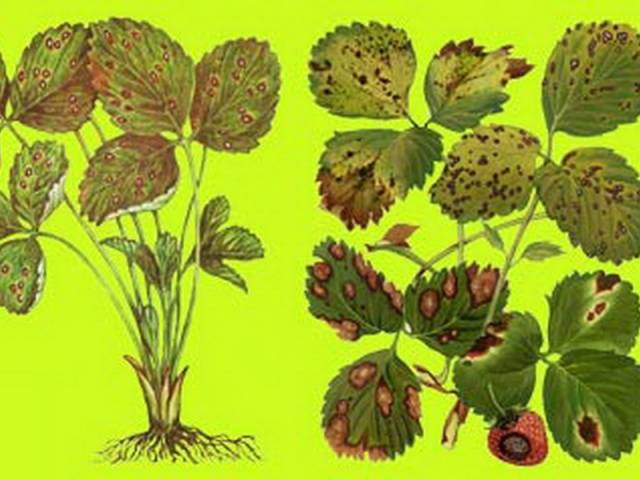
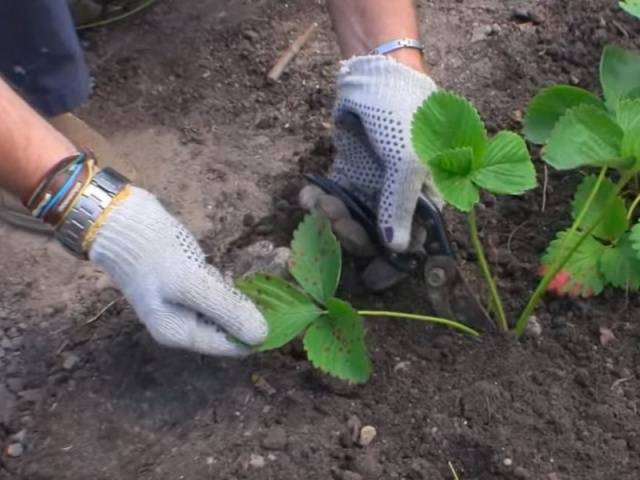

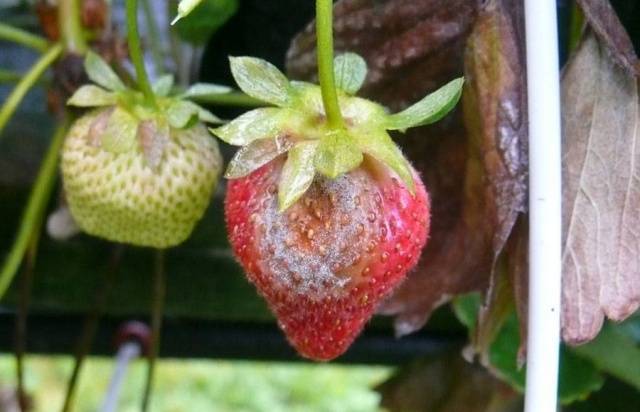
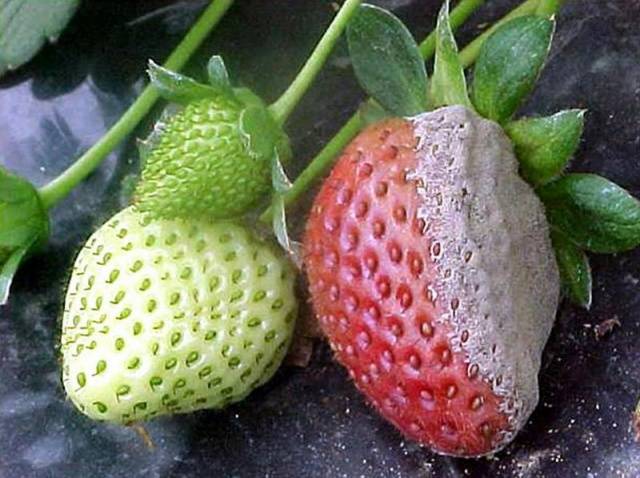
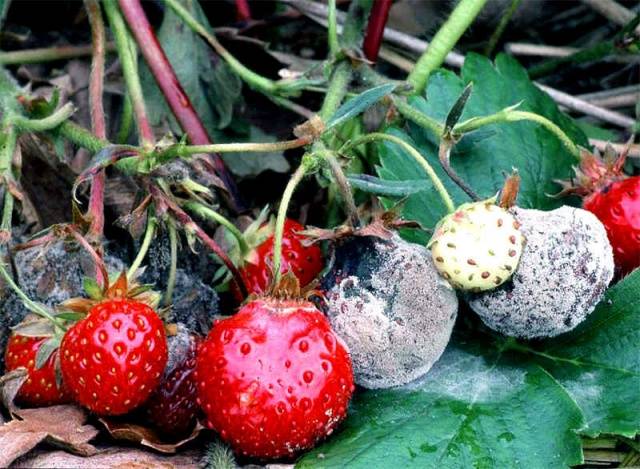
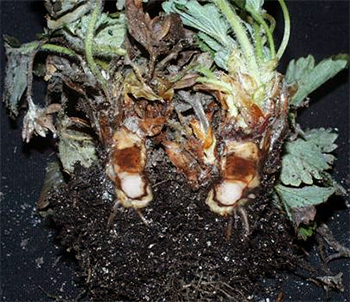
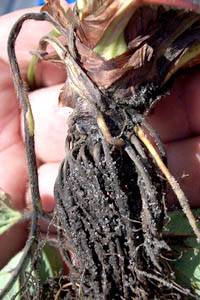
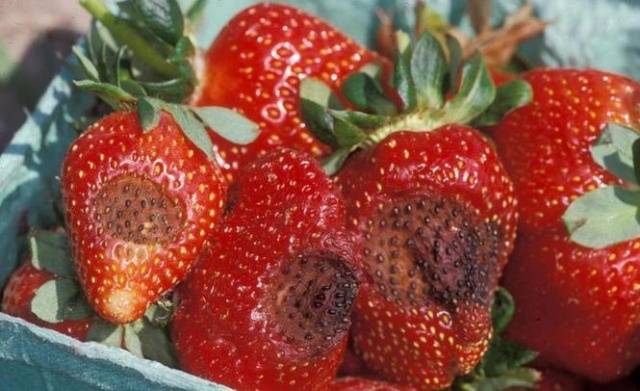
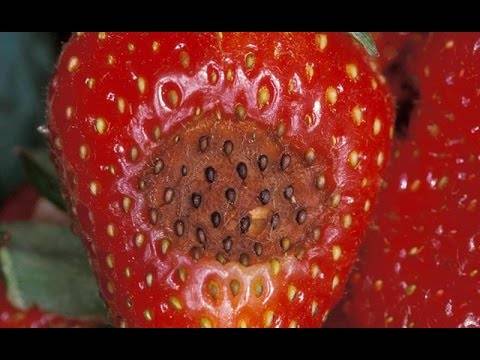
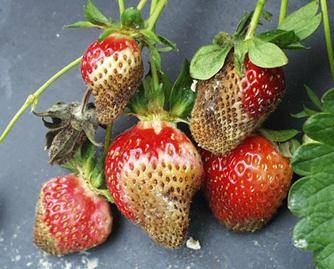
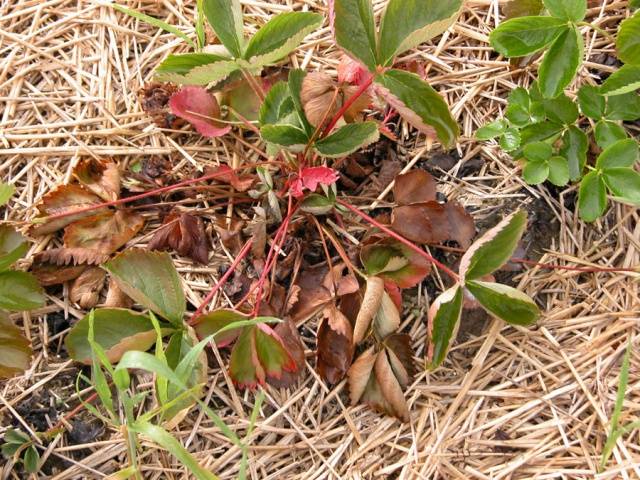

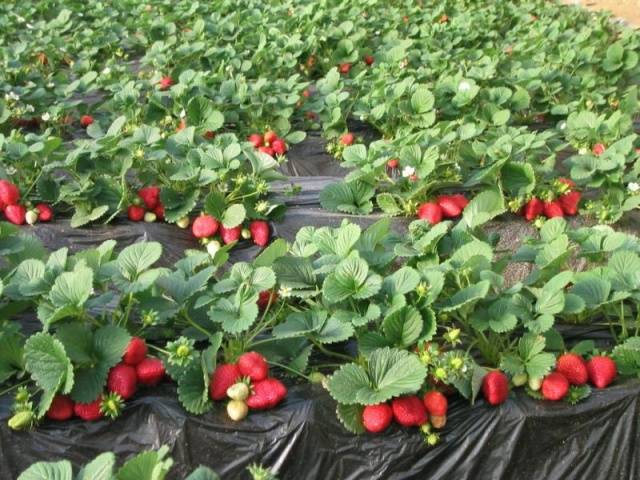
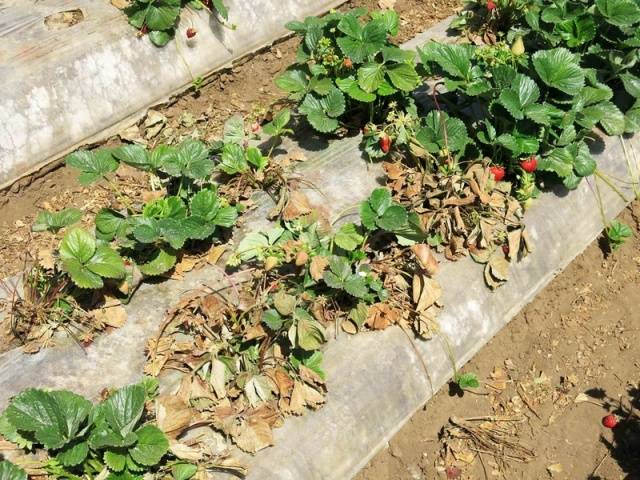
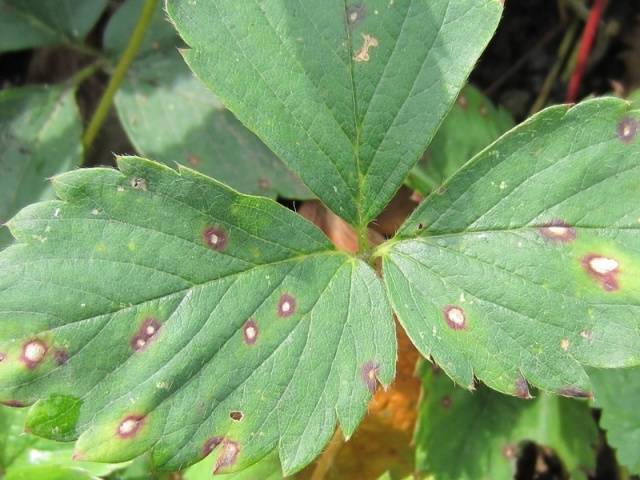
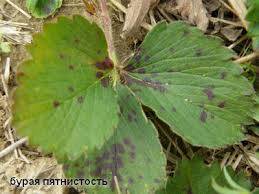
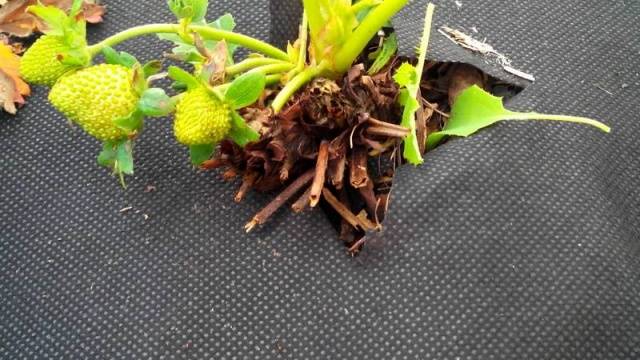
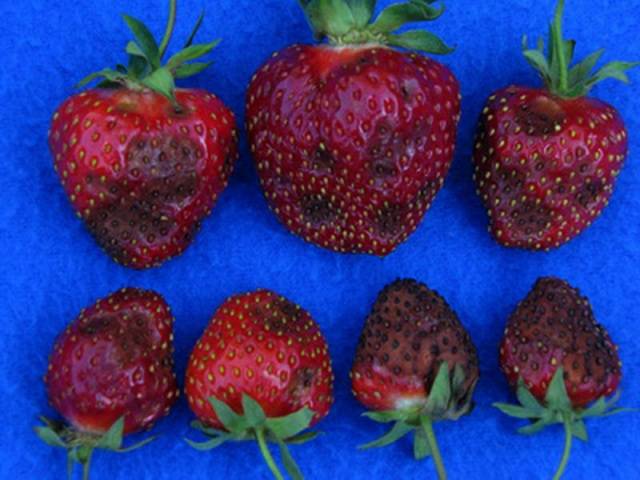
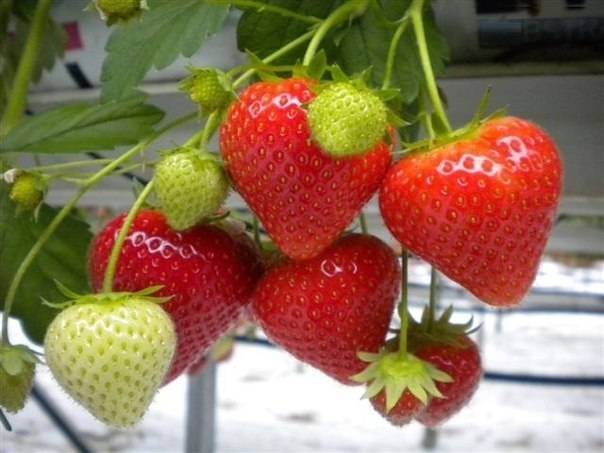
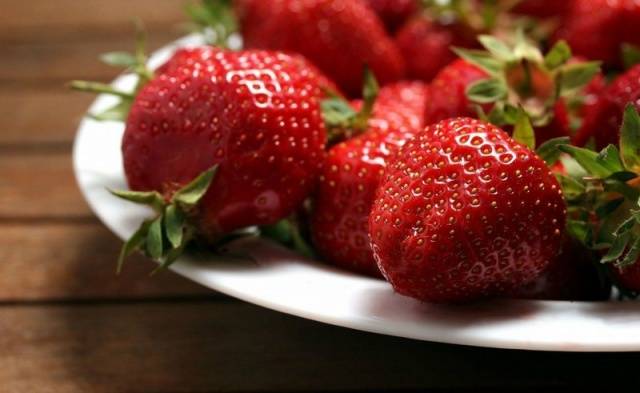


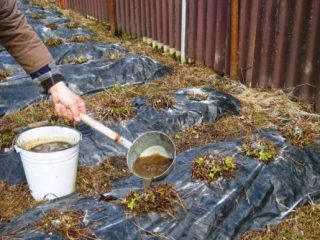

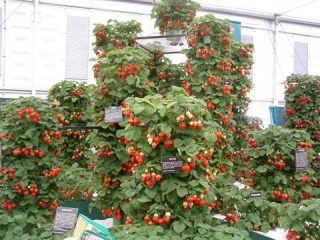


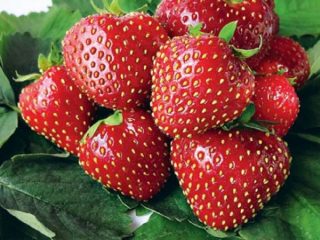

Hello. I bought strawberry seedlings in pots from the Flos agricultural firm in mid-July. In early August, the old leaves of the seedlings began to turn red and turn upside down. What is it?
Hello, on strawberry flowers, but not on all, a black spot appears in the center and the fruit does not develop further. What is this disease?
Good day!
There are several reasons for the blackening of the central part of strawberry flowers.
The middle may turn black due to recurrent frosts or sudden changes in temperature. The following signs indicate that strawberries cannot tolerate a drop in temperature:
• cores of flowers turn black;
• the tips of the berries also turn black.
In this case, if you experience night frosts, it is necessary to cover the strawberry beds at night or when the temperature drops sharply.
In late summer - early autumn, the flowers turn black due to the appearance of such a pest on strawberry beds as the strawberry weevil. The following signs indicate its appearance:
• blackening of flower cores;
• barely noticeable holes appear on the petals and leaves of strawberries;
• peduncles do not bloom, dry out;
• after flowering, the berries are not tied on the bushes.
Weevil larvae hatch just in flowers and simply eat out the middle. Most often, this pest attacks remontant strawberry varieties.
In both cases, it is necessary to clear the strawberry beds of leaves and mulch and burn the debris. You can also feed your strawberries with fertilizers based on phosphorus and potassium. The following drugs will help from the pest: Inta-vir, Iskra-bio, Fitoverm, Agravertin.